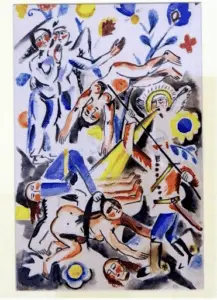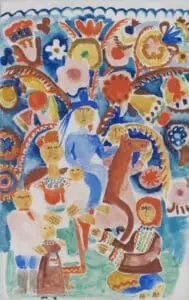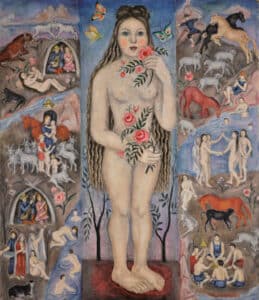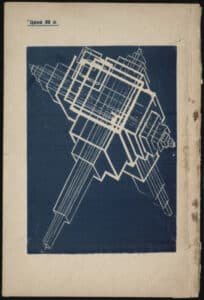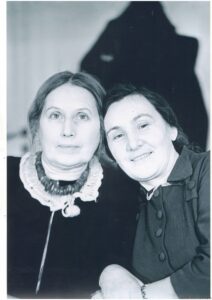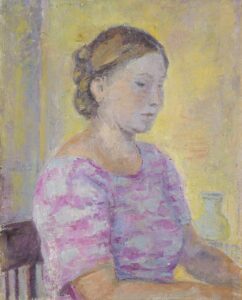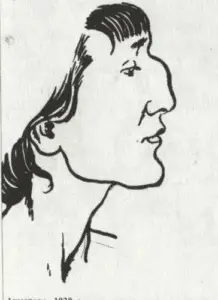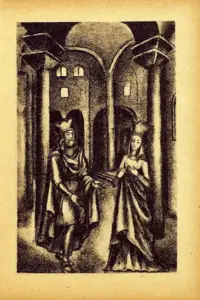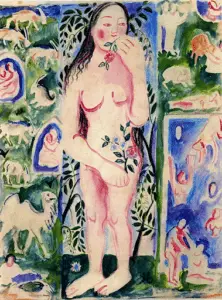Maria Siniakova was a Ukrainian artist that is increasingly seen as expressing a unique feminine Ukrainian identity in her art. Active at the turn of the last century, she is credited as a founding artist of “sensual futurism.” This artistic style attempted to blend the hyper technological and mechanical style of futurism with primitive motifs and human intimacy. Today, she is increasingly turned to as a major contributor to the development of Ukrainian art.
“Nobody taught me how to paint. I did it myself. I was born and raised surrounded by blossoming nature, untouched by the ugliness of the city. Meadows smelling of wild herbs, fields, the woods, the river in the valley, the blue skies – that’s my school of painting. I have drawn and painted for as long as I can remember.” – Maria Siniakova
Early Life and Education of Maria Siniakova
Maria Mikhaïlovna Siniakova was born in 1890 in the Zmiev district outside of Kharkiv, Ukraine. The large Siniakov family was well established there, and her father was a jeweler who also sold icons, crosses, and bibles. The Siniakov siblings’ mother died young, leaving the children in his care. There were nine Siniakov siblings in total, five sisters and four sons. The dacha (country house) where she was born, affectionately coined Krasnaia Poliana (Red Meadow), was an idyllic location in the Ukrainian countryside. Siniakova grew up surrounded by nature and peasant folklore, which would later influence the natural motifs present in her work. Siniakova in many ways was raised by the landscape, and the five sisters were remembered as free spirits running barefoot through the surrounding countryside.
In addition to her natural inspirations, Siniakova also received a formal artistic education. From 1906 to 1908, Maria Siniakova attended the Municipal School of Drawing and Painting in Kharkiv. A couple of years later in 1910-1911, she was a member of the Golubaya Lilia (The Blue Lily) group. These artists were based at the renowned artist and graphic designer Evgeny Agafonov’s studio, and experimented with a variety of avant garde elements with a focus on floral and watercolor techniques. In the years before the First World War, Siniakova traveled extensively around Central Asia. Her travels greatly influenced her artistic style, particularly in the floral patterns in Central Asian art. Many of her paintings seem to try to recreate the textile artistry for which Central Asia is particularly famous.
In her memoirs, Siniakova emphasizes that she remembered the years before the war at Krasnaia Poliana as the most beautiful time of her life.
Siniakova’s Art Amidst the First World War
Maria Siniakova gradually drifted away from Sinaia Liliia to more actively explore futurism, blending it into her own style back at her childhood home. During the turbulent years of the early 20th century, Krasnaia Poliana would become a refuge for left-wing artists, writers, and poets from nearby Kharkiv and Russia.
Siniakova played a large role in the movement to establish Ukrainian culture and identity in the early years of the USSR. In 1917, Mykhailo Boychuk founded the Ukrainian State Academy of Arts to craft a communist identity using traditional Ukrainian motifs and cultural references. The result was what came to be known as the Ukrainian Renaissance. Although Siniakova never joined the Academy, her style became recognized in this period as purely Ukrainian. Her art aimed to appeal to a uniquely Ukrainian audience and inspire pride in Ukrainian heritage.
Siniakova was most active during World War One and the 1920s. Her art of this time is largely defined by her experiences living in Kyiv during the turbulent exchanges of power from 1917-1919. During the Russian Civil War in particular, the artistic hub that was Krasnaia Poliana allowed Siniakova to become closer with local avant-garde artists, namely Vasyl Ermilov and Boris Kosarev. Ermilov and Kosarev in particular were renowned for their expressions of cubism and primitivism and their attempts to build a new language of art focused on symbolism and its foundational building blocks. Around this time her works were published in left-wing Kharkiv-based publications, particularly Ways of Creativity (Шляхи творчості) and Collection of New Art (Колекція нового мистецтва) in 1919. Siniakova was an active revolutionary, and her artwork reflected a socialist Ukraine that was culturally unique and simultaneously part of a larger Soviet community. Her art reflected a Marxism that was aware of Ukraine’s unique position (for example their Byzantine past) in the larger USSR.
Art historian Marina Dmitrieva describes Siniakova’s style as “sensual futurism,” emphasizing her role in the cultivation of the Ukrainian avant-garde and futurist circles as both an artist and an organizer. Futurism was preoccupied with the dynamic development and speed of technological advancements, a concept that swept Europe after WWI pushed innovations to their limits. Siniakova’s sensual futurism took this new concept and tried to combine it with primitivism, creating a universal art that would span artistic styles. Her futurism added a uniquely feminine perspective that added an emphasis on nature and even the inclusion of pagan techniques in representing nude female forms, but using futurism’s emphasis on motion, change, and schematic arrangements. Siniakova was not afraid to experiment with a variety of styles, and her artistic innovation in combination with establishing Krasnaia Poliana as an artistic refuge allowed futurism to form a long tradition in Ukrainian art.
Siniakova presents a future world tainted by modern war. Her artwork explores the Ukrainian countryside and the idyllic Krasnaia Poliana destroyed by World War One. Her image of the future is dystopian: one destroyed by violence.
Siniakova’s Moscow Period
In the years following the war, Maria Siniakova frequently traveled to Moscow to visit her sisters Ksenia and Vera, who had moved there to be closer to Soviet artistic circles, in which they were also involved. Similar to Krasnaia Poliana in Kharkiv, the sisters’ apartments soon transformed into hubs for Moscow’s bohemian artists. At this time, Siniakova also began illustrating book covers for Liren Press, making her work and unique style more well-known.
In 1922, Siniakova took up residence in Moscow, initiating what would become the “Moscow Period” of her life and artistic career. During this time, she developed stricter black-and-white forms for book illustrations as opposed to her more avant-garde and decorative work of years prior. At this time she also created a series of cartoon-like portraits of famous writers and poets, notably Akhmatova, Mayakovsky, and Yesenin, which were shown at the 20th anniversary of the 1905 revolution and are still well-known representations of the artists.
Siniakova’s work continued to gain wider fame. She was shown at the Moscow Museum of Fine Arts in 1925. In 1927, her work traveled to Leipzig to be shown at the International Exhibition Focusing on the Art of the Book. In 1928, her art would travel to the Contemporary Book Art at the International Press Exhibition in Cologne, and finally, she was once again shown at the International Exhibition in Paris in 1931.
During World War Two, Siniakova was evacuated by family and friends to live in Yelabuga with the renowned Russian poet Marina Tsvetaeva. Siniakova’s memoirs detail dark times, and she emphasizes secretly picking potatoes to not starve to death. Amidst the difficulties of war, Siniakova had little time to produce art. Little of her work that was produced during this period survived except for a few portraits and illustrations for the Old French epic Song of Roland published in1943. Following the war, Siniakova would continue to produce some acrylic and watercolor still lifes throughout the 1950s and early 1960s, stepping away from avant-garde futurism, which had fallen from official favor. Although it’s not explicitly recorded why, her artistic production dwindled after this period.
Despite Siniakova’s continued commitment to her art, she would not receive independent exhibitions (outside of Soviet futurist circles) until the 1960s. Despite the appearance of her work in international shows the years prior, Sinakova remained a largely sidelined artist for much of her life. For example, Siniakova became a member of the Moscow Artists’ Association in the early 50’s, but was expelled from it in 1952 for being too modernist. It was only in September of 1969 that art critic Dmytro Gorbachov organized her first solo exhibition at the Writers Club in Moscow. This exhibition would be largely well received and constitute the first time a larger collection of her works were shown thematically side-by-side. A success, a second exhibition eventually took place in 1974. She would not become widely known until after her death and after Ukraine’s independence.
Later Life and Legacy
Maria Siniakova died on May 30, 1984, in Moscow, at the age of 94. After a long life, she now boasts a long legacy. In 1990, an exhibition entitled “Ukrainian Avant-Garde. 1910-1930” in Kyiv and Zagreb displayed Siniakova’s works from the period between 1914-1916. These highlighted the brilliance of three notable works: Eva, Carousel, and War from private collections. Now, with growing interest in Ukraine’s rich history, her works continue to appear in contemporary exhibitions and discussions of Ukrainian identity construction.
You Might Also Like
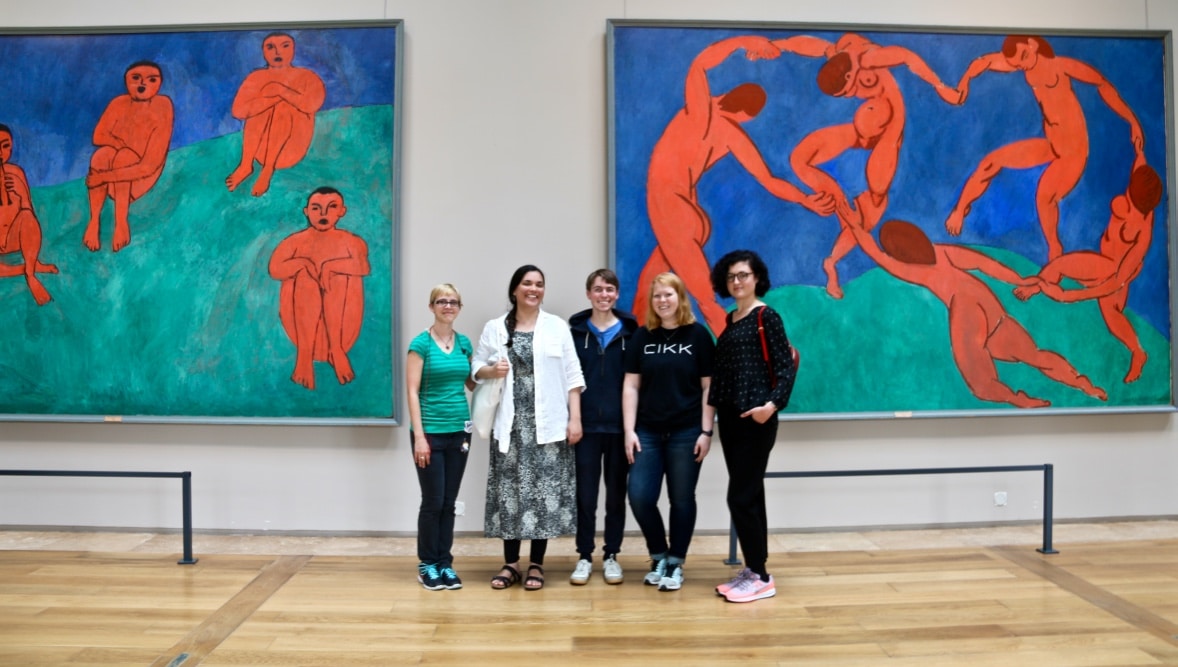
Museums as Self-Care
In 2018, doctors in Montreal began prescribing visits to the Montreal Museum of Fine Arts (MMFA) for patients experiencing depression, anxiety, and other health issues. This innovative approach to mental health treatment was launched under the initiative of the MMFA in collaboration with Médecins francophones du Canada (MFdC). The program allows physicians to provide patients […]
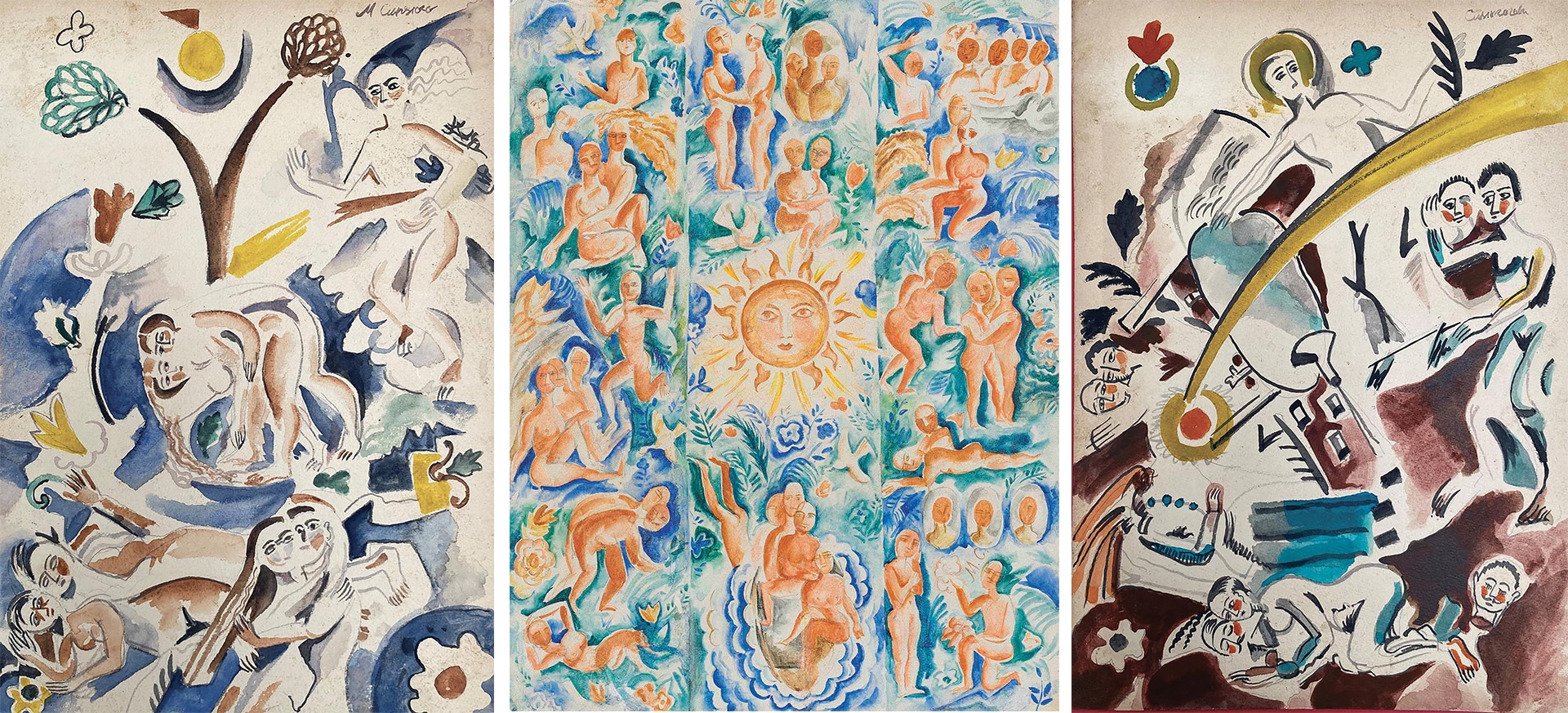
Maria Siniakova and the Ukrainian Avant-garde
Maria Siniakova was a Ukrainian artist that is increasingly seen as expressing a unique feminine Ukrainian identity in her art. Active at the turn of the last century, she is credited as a founding artist of “sensual futurism.” This artistic style attempted to blend the hyper technological and mechanical style of futurism with primitive motifs […]
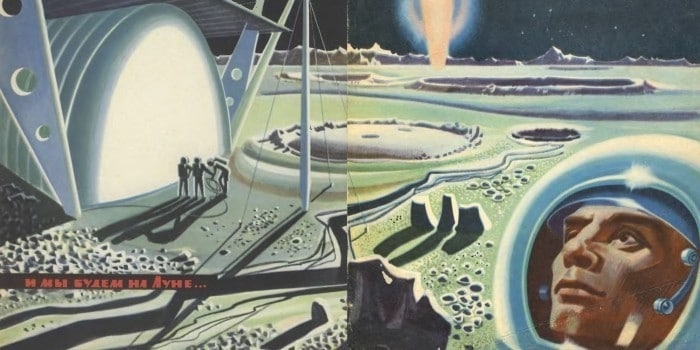
Science Fiction and Fantasy From Behind the Iron Curtain
Science fiction/fantasy, often shorthanded to SFF, is a genre of media concerned with supernatural, fantastical, or other elements beyond our current technological capabilities. Although its roots run deep, borrowing inspiration and elements present in The Odyssey or 20,000 Leagues Under the Sea, SFF truly came into its own after the Industrial Revolution. It was a […]
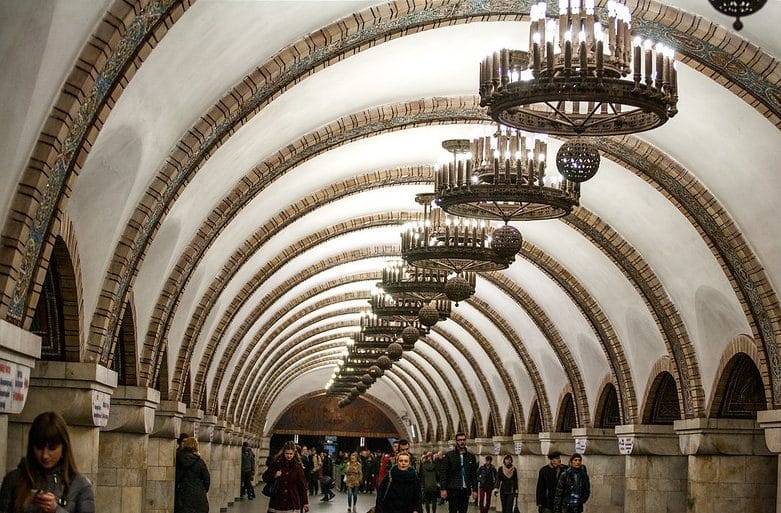
History of the Kyiv Metro System
Carrying well over a million passengers per day across 52 stations, Kyiv’s metro system is an integral part of the city’s daily life. While it has developed with the ever-growing city, like much of Ukraine’s public infrastructure, the metro system has struggled to keep up with the demands made of it. These demands are growing […]

National Museum of the History of Ukraine in the Second World War
On one of the great hills of Kyiv stands a colossus with sword and shield in hand. Her massive shield defends the country and her sword pierces the sky above the city. This is the Motherland Monument, a gigantic statue celebrating the Soviet victory in World War II. This statue stands taller than the Statue […]


